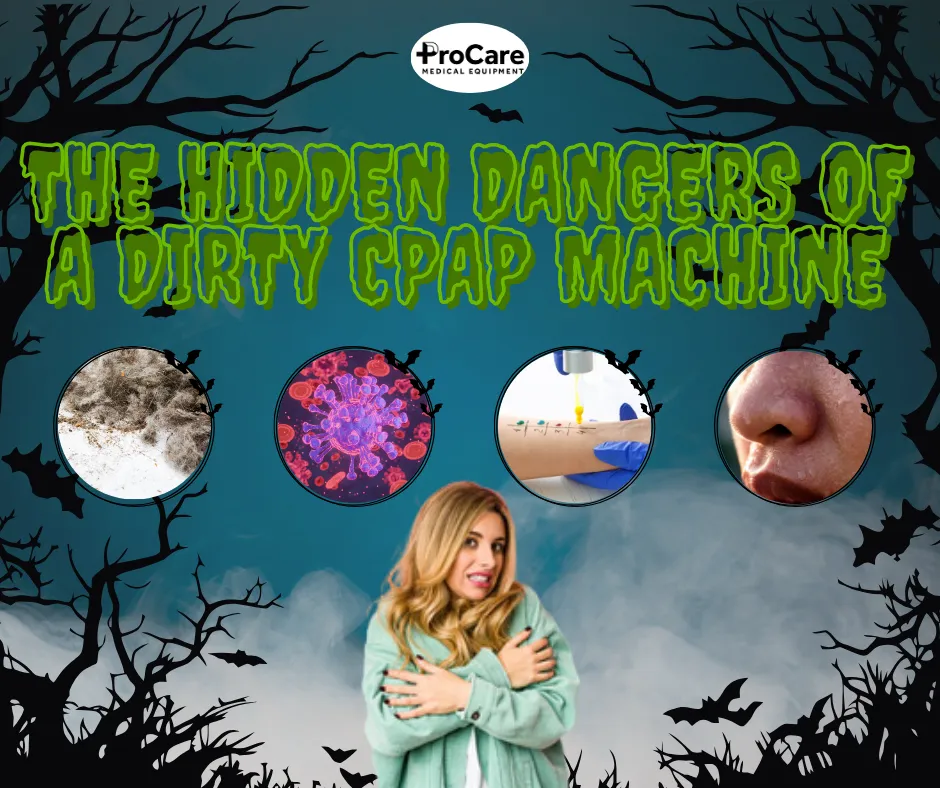
The Hidden Dangers of a Dirty CPAP Machine: Protect Your Breathing Quality
As a Durable Medical Equipment (DME) company, we understand the importance of maintaining your CPAP (Continuous Positive Airway Pressure) machine. While these devices are essential for managing sleep apnea, a dirty CPAP machine can introduce contaminants into the air you breathe, significantly affecting your breathing quality. Let’s explore how this happens and what you can do to ensure your CPAP machine remains clean and safe.
How Contaminants Enter Your CPAP Machine
CPAP machines work by delivering a continuous stream of air through a mask to keep your airways open while you sleep. However, if not properly maintained, these machines can become a breeding ground for various contaminants:
Dust and Debris: Over time, dust and debris can accumulate in the machine’s filters and tubing. When these particles are inhaled, they can cause respiratory issues and reduce the effectiveness of your therapy1.
Bacteria and Mold: The warm, moist environment inside a CPAP machine is ideal for bacteria and mold growth. These microorganisms can lead to infections, allergies, and other health problems2.
Pet Dander and Allergens: If you have pets, their dander can easily find its way into your CPAP machine. This can trigger allergic reactions and exacerbate asthma symptoms1.
Skin Oils and Sweat: The mask that sits on your face can collect oils and sweat, which can then transfer to the machine. Over time, this can lead to skin irritations and infections2.
The Impact on Breathing Quality
When contaminants infiltrate your CPAP machine, they compromise the quality of the air you breathe. This can result in:
Allergic Reactions: Dust, pet dander, and other allergens can trigger allergic reactions, making it difficult to breathe comfortably1.
Reduced Therapy Effectiveness: A dirty machine can hinder the airflow, making your CPAP therapy less effective and leaving you feeling tired and unrested4.
Tips for Keeping Your CPAP Machine Clean
To ensure your CPAP machine remains free of contaminants and continues to provide you with clean, effective therapy, follow these simple tips:
Regular Cleaning: Clean your mask, tubing, and humidifier chamber daily with mild soap and water. Rinse thoroughly and allow them to air dry.
Replace Filters: Change the machine’s filters as recommended by the manufacturer to prevent dust and debris buildup.
Use Distilled Water: Always use distilled water in your humidifier to avoid mineral deposits and bacterial growth.
Inspect for Mold: Regularly check your machine for any signs of mold or mildew and clean it immediately if you find any.
Store Properly: Keep your CPAP machine in a clean, dry place when not in use to prevent contamination.
By taking these steps, you can ensure that your CPAP machine remains a reliable tool for managing your sleep apnea, providing you with clean, healthy air every night.
Conclusion
Maintaining a clean CPAP machine is crucial for your health and the effectiveness of your therapy. By understanding the risks of a dirty machine and following proper cleaning protocols, you can protect your breathing quality and enjoy a restful night’s sleep. If you have any questions or need assistance with your CPAP equipment, don’t hesitate to reach out to us. We’re here to help you breathe easier!